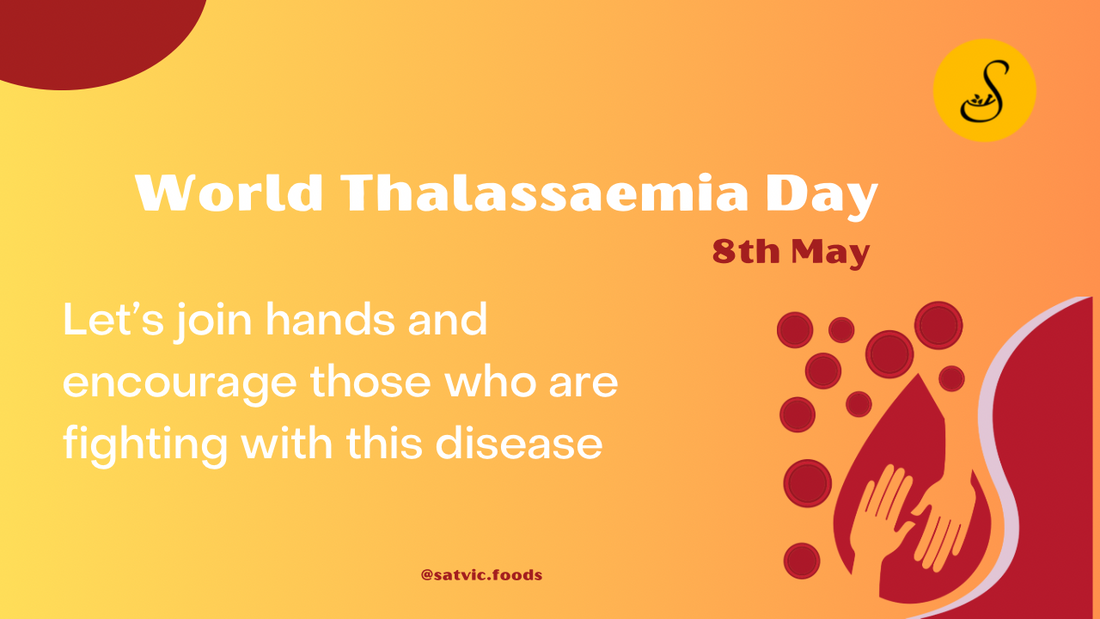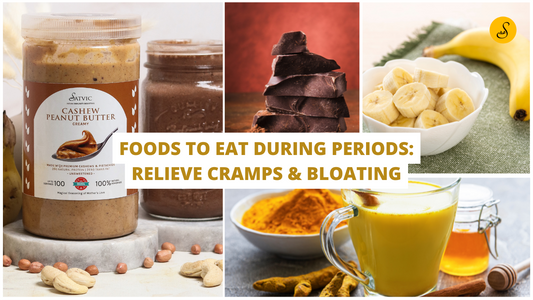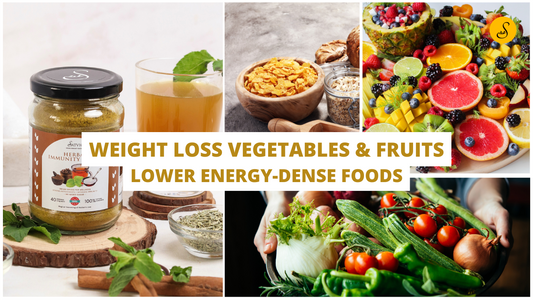Understanding Thalassaemia: A Complete Guide for 2023

Thalassemia is a genetic blood disorder, an inherited condition that vastly affects the production of hemoglobin, a protein that carries oxygen throughout our body. Satvic Foods aims to contribute by raising awareness for The International Thalassaemia Day 2023 theme: “Be Aware. Share. Care: Strengthening Education to Bridge the Thalassaemia Care Gap.’’
Through this article, Satvic Foods strives to spread knowledge, educate people about Thalassemia, and help reduce the ignorance and disease burden for patients and society. This guide will cover everything one needs to know about Thalassemia, including its symptoms, causes, diagnosis, treatment, and dietary considerations. Whether you have Thalassemia or know someone who does, keep reading to learn more about this condition and how to manage its symptoms.
What is Thalassemia?
By definition, thalassemia is a more extensive set of diseases, anemias. When someone is anemic, it means that the body is incapable of producing normal and healthy RBCs, which are responsible for giving the red color to the blood and carrying oxygen throughout the body.
Thalassemia is a hereditary disorder causing defects in the protein hemoglobin molecule in red blood cells. Mutations in the genes cause thalassemia that controls the production of hemoglobin, not by nutritional deficiencies or outer environmental influences.
How is Thalassaemia Inherited?
Thalassemia inheritance happens in an autosomal recessive manner, i.e., a child must inherit two mutated genes, one from each parent. Children who inherit only one copy of the mutated gene are called carriers, and they themselves do not experience any symptoms of thalassemia.
What Causes Thalassemia?
Hemoglobin consists of four protein chains: two alpha chains and two beta chains. Mutations or missing genes in the alpha or beta chain genes result in a shortage of functional hemoglobin. The extent of the defect and type determines how severe the condition is.
What are the Types of Thalassemia?
Hemoglobin consists of four alpha-globin and two beta-globin protein chains, and the two main types of thalassemia are alpha and beta.
Alpha thalassemia occurs when there is not enough alpha protein produced, while beta thalassemia occurs when there is a mutation in the beta-globin gene. Doctors categorize the severity of both types of thalassemia as minor, intermedia, or major. Alpha thalassemia has no symptoms in minor type to significant blood transfusions in the major. Beta thalassemia results in moderate to severe symptoms. It is more common in people of Mediterranean ancestry, where malaria is prevalent or was once endemic.
Thalassemia Symptoms
The symptoms of thalassemia may vary depending on the type of thalassemia. Mild thalassemia may not cause symptoms, the intermediate may cause mild anemia symptoms with more moderate disease, and severe thalassemia may require lifelong medical care. Some common symptoms of thalassemia are as follows:
- Fatigue and weakness
- Pale skin
- Bone abnormalities
- Shortness of breath
- Jaundice
- Delayed growth and development
- Enlarged spleen and liver
- Dark urine
- Low immunity
Typically, in newborns, thalassemia symptoms manifest after 6 months of age due to a distinct kind of hemoglobin called fetal hemoglobin. However, after 6 months, their hemoglobin composition shifts towards the "normal" type, which can bring out the above-mentioned symptoms.
Diagnosis of Thalassemia
Typically, healthcare providers diagnose thalassemia through blood and additional tests that measure the severity, levels, and size of hemoglobin in the body and the red blood cells. These tests may include:
Hemoglobin Electrophoresis: A test that separates and identifies the various types of hemoglobin in the blood
Complete blood count (CBC): It measures the number and size of red blood cells, white blood cells, and blood platelets.
Hemoglobin Electrophoresis: To diagnose beta-thalassemia.
Genetic Testing: To diagnose alpha-thalassemia.
Iron Analysis: It will indicate if iron deficiency or thalassemia is the cause of your anemia.
Is There any Treatment for Thalassemia?
Mild thalassemia may not require heavy treatments, while severe thalassemia may require lifelong medical care. Some standard therapies for thalassemia are:
Blood Transfusions: Healthy red blood cells are transfused into the body to replace the deficient red blood cells. People with less severe and major thalassemia need between 8 or more and 12 transfusions yearly.
Iron Chelation Therapy: It removes excess iron from the body, which can accumulate due to frequent blood transfusions and can damage the heart and other organs.
Bone Marrow or Stem-cells Transplant: Healthy bone marrow cells are transplanted into the bloodstream to replace the defective cells to produce healthy hemoglobin.
Folic acid supplements: One of the elements required to produce healthy blood cells.
Which Food is Good for Thalassemia?
People with thalassemia may need to follow dietary adjustments to avoid complications. Some foods are beneficial in thalassemia, while certain foods need to be avoided as well.
Foods to Avoid: People with thalassemia may need to limit iron intake, as frequent blood transfusions can lead to iron overload in the body. One must avoid foods such as dairy products, vitamin C, almonds, hazelnuts, sesame seeds, soybeans, white bread, white rice, kale cabbages, cauliflower, and fortified cereals.
Foods to Include: Beetroot, carrots, cucumbers, lettuce, potatoes, apples, cranberries, celery, alfalfa sprouts, turnips, pomegranates, strawberries, pineapples, and zinc and vitamin D supplements, among others.
Based on general observations, we have listed the food choices. It is essential to consult your healthcare provider before modifying your diet or taking any supplements. This is because dietary requirements vary depending on the severity of thalassemia, and your healthcare provider can guide you accordingly.
What is the Difference Between Thalassemia and Anemia?
According to WebMD, there are more than 400 types of anemia. They are further classified into three groups- anemia caused by blood loss, decreased or faulty RBC production, or the destruction of RBC.
Iron deficiency anemia is a common anemia type caused by a nutrient-deficient diet, heavy menstrual bleeding, prolonged gastrointestinal bleeding, post-surgery trauma, or due to the inability of the body to absorb iron. In contrast, thalassemia is hereditary from at least one of the parents or both. Iron/vitamin deficiency anemia is easily curable by including iron-rich foods and folate supplements in the diet.
Anemia most commonly affects immunity. Therefore, apart from the iron-rich diet, you may include Satvic Foods' Herbal Immunity Kadha. One of its key ingredients is green cardamom, which increases iron absorption by the cells and helps fight symptoms of anemia, such as dizziness and lethargy while boosting overall immunity.
Boost your immunity with Satvic Foods' Herbal Immunity Kadha - a healthy detox option for anemia. Please avoid it if you have thalassemia due to its high iron content!

No comments








comments